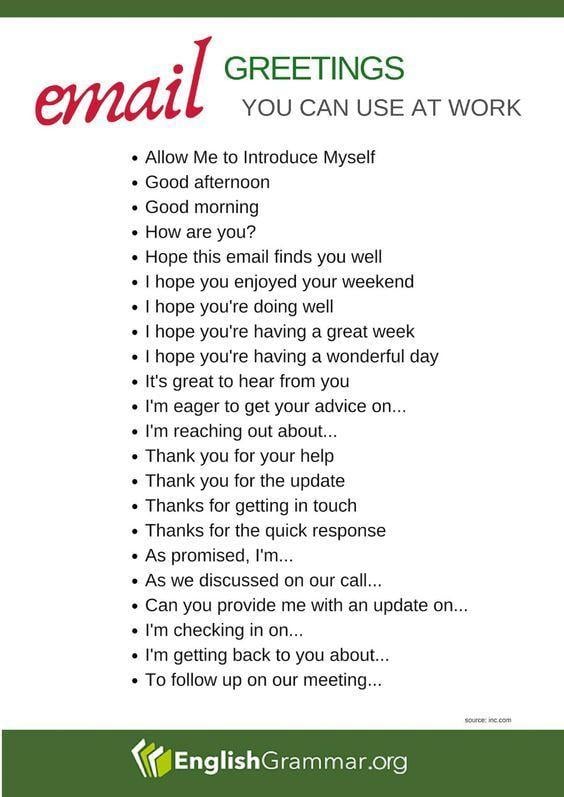When writing emails to coworkers and clients at work, it is essential to use the right lingo. Below we have compiled the most useful, polite and professional email phrases you can use at work.

There are six key components to properly structure a business email in English. These will help you to clearly express your ideas and improve your communication with coworkers and clients:
- Subject Line
- Greeting
- Intro/Purpose
- Detail
- Ask/Action
- Closing/Sign-off
Subject Line
The subject line should be clear, concise, and meaningful. It should summarize, not describe and should not consists of a single word, e.g., Important, Help, or Urgent.
Greeting
You should always use the addressee’s name and title if it is a formal message. However, casual business communications do not always need a formal greeting - they can often just list the recipient names.
Possible greetings could include "Good morning Mr. Brown," or "Good afternoon President Chang,".
Intro/Purpose
Right after the greeting, you should write an intro stating the purpose of your email. Clearly and concisely explain the purpose, question or issue. Do not use more than one or two sentences as you will add the necessary details later on in the email.
Possible intros could include "I'm eager to get your advice on..." or "As we discussed on our call...".
Detail/Body
Ask/Action
A possible call for action could include "Can you provide me with an update on..." or "Please send me...".
Closing/Sign-Off/Good-bye:
End your email by using phrases or words conveying respect and formality (e.g., “Sincerely,” “Best regards,” “Best”). Include signature lines that contain helpful contact information, such as your name, title, company name, address, email address and telephone number.
Are you interested in teaching English as a foreign language?
Get your TEFL or TESOL certificate with ITTT.
Register now & get certified to teach english abroad!


